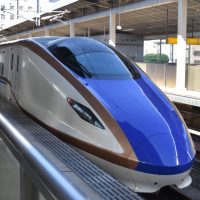 This was my fourth trip to Japan, following one in 2017 and two more in 2018. The first of my 2018 trips was a relatively short notice visit to Tokyo in July 2018, while the second was as part of my around the world trip in October. It was then almost a year before this trip (the first of two in 2019) which is my most extensive yet, with a week spent travelling around Japan, followed by back-to-back week-long meetings in Tokyo, giving me the ideal opportunity to further explore the city and its wonderful speciality coffee scene.
This was my fourth trip to Japan, following one in 2017 and two more in 2018. The first of my 2018 trips was a relatively short notice visit to Tokyo in July 2018, while the second was as part of my around the world trip in October. It was then almost a year before this trip (the first of two in 2019) which is my most extensive yet, with a week spent travelling around Japan, followed by back-to-back week-long meetings in Tokyo, giving me the ideal opportunity to further explore the city and its wonderful speciality coffee scene.
I flew out on Friday, 23rd August, taking a new route (for me, at least) via Helsinki with Finnair. I spent a week travelling in a big loop using Japan’s excellent rail network, heading first to Nagano, then along the northern coast of the main island, Honshu, to Kanazawa. From there I made my way to Kyoto before returning to Tokyo on the following Sunday, 1st September, ready for the first of my two week-long meetings. This time I stayed in the Tokyu Stay hotel in Aoyama, which has become my new Tokyo base, partly because it’s surrounded by excellent coffee shops! After the second of my two week-long meetings, I gave myself another weekend to explore Tokyo before flying back on Monday, 16th September.
Compared to my visit in July 2018, which coincided with the hottest ever heatwave recorded in Japan, it was relatively cool. However, late August and early September are still the height of summer in Japan and it was still hot and humid, often exceeding 30⁰C. It’s also the rainy season: for example, it rained almost the whole time I was in Kanazawa.
The flights to and from Tokyo are covered in the Travel Spots below, where you can also find a piece I wrote about getting to and from the airport. If you are interested in the Coffee Spots I visited during my three weeks in Japan, I’ve organised them by city, starting with Nagano, before going on to Kanazawa, Kyoto and finally, Tokyo and its surrounding areas.
Header Image: the cloud-wreathed mountains behind Kanazawa Castle, as seen from my hotel, an almost constant backdrop during my three days in Kanazawa.
Travel Spots
You can read about the trip in the following Travel Spot posts.
Brian’s Travel Spot: Flying Finnair, Part I – Manchester to Helsinki
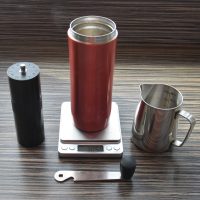 Welcome to another Brian’s Travel Spot, quickly following on from the previous one, where I noted that I wasn’t writing many Travel Spots this year! This particular Travel Spot covers what is my fourth trip to Japan in a little over two years. However, whereas for each of the previous three trips, I’ve flown British Airways, this time I’m flying Finnair via Helsinki.
Welcome to another Brian’s Travel Spot, quickly following on from the previous one, where I noted that I wasn’t writing many Travel Spots this year! This particular Travel Spot covers what is my fourth trip to Japan in a little over two years. However, whereas for each of the previous three trips, I’ve flown British Airways, this time I’m flying Finnair via Helsinki.
Wherever possible, I fly direct (it’s quicker and there’s less to go wrong). However, on this occasion, I was starting in Manchester, so I was going to have to change planes somewhere. Normally, I’d fly down to Heathrow with British Airways, taking a direct flight from there, but since Finnair is part of the One World alliance with British Airways, the Manchester-Helsinki-Tokyo route was shown as a (significantly cheaper) option, which prompted me to book it.
Since my Travel Spots run on the long-side, and since each flight is a considerable journey in its own right, I’ve split the trip over two posts. This first part covers the flight from Manchester to Helsinki, while Part II covers the onward flight to Tokyo. Finally, Part III deals with my flight back from Tokyo, which was with British Airways.
Continue reading...Brian’s Travel Spot: Flying Finnair, Part II – Helsinki to Tokyo
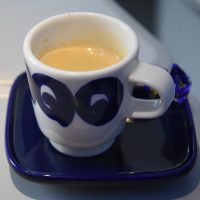 Welcome to second instalment of the latest Brian’s Travel Spot, covering my journey to Tokyo, flying with Finnair via Helsinki, a new route and new airline (for me). Part I covered my journey from Manchester to Helsinki, while this, Part II, covers my onward flight from Helsinki to Tokyo’s Narita airport.
Welcome to second instalment of the latest Brian’s Travel Spot, covering my journey to Tokyo, flying with Finnair via Helsinki, a new route and new airline (for me). Part I covered my journey from Manchester to Helsinki, while this, Part II, covers my onward flight from Helsinki to Tokyo’s Narita airport.
On my previous three trips to Japan, I’ve flown British Airways, and, wherever possible, I fly direct (one less thing to go wrong). However, since I was starting in Manchester, I had to change planes somewhere, so I decided to try the Manchester-Helsinki-Tokyo route, flying with British Airways’ One World alliance partner Finnair.
Compared to the route I would normally take, flying to Heathrow with British Airways and on from there, this meant a longer first leg, heading over the North Sea to Helsinki (approximately two hours in the air versus 35 minutes), followed by a shorter second leg, roughly 9½ hours as opposed to 11½ hours. That may not seem like much, but when you’re trying to sleep on the plane, that’s actually two hours less sleep, which can be crucial!
Anyway, I’m getting ahead of myself: my first challenge was to make my connecting flight at Helsinki.
Continue reading...Brian’s Travel Spot: Narita Airport and the Keisei Skyliner
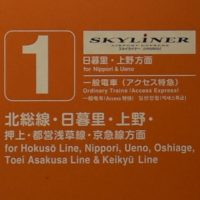 Welcome to another instalment of Brian’s Travel Spot, following on from my flights with Finnair from Manchester via Helsinki and on to Tokyo’s Narita airport. I ended that particular Travel Spot at Narita Airport, where, as every seasoned traveller knows, the journey’s not quite over. You still have to get from the airport to your ultimate destination. Sometimes, this is fairly straightforward. However, in the case of Narita, you are faced with a bewildering array of options…
Welcome to another instalment of Brian’s Travel Spot, following on from my flights with Finnair from Manchester via Helsinki and on to Tokyo’s Narita airport. I ended that particular Travel Spot at Narita Airport, where, as every seasoned traveller knows, the journey’s not quite over. You still have to get from the airport to your ultimate destination. Sometimes, this is fairly straightforward. However, in the case of Narita, you are faced with a bewildering array of options…
Part of the trick is knowing where in Tokyo (or, in my case, where beyond Tokyo) you want to get to. This Travel Spot is dedicated to getting to and from Narita Airport using just one of the options, the Keisei Skyliner, although I will talk about the merits of the other routes/options.
Narita, by the way, isn’t the only airport in Tokyo. There’s also Haneda, which, in contrast to Narita (65 km east of Tokyo), is much closer to the city centre, on the western edge of Tokyo Bay. You also have a similarly bewildering array of options there, including a monorail! For more on getting to Tokyo from Haneda and getting back to the airport, check out my trip from July last year.
Continue reading...Brian’s Travel Spot: Returning from Tokyo in Club World
 On Friday I’ll be flying to Tokyo again, so I thought it was high time that I finished writing up my previous trip, so welcome to another Brian’s Travel Spot, this time covering my return from Tokyo. On my flight out, I travelled a new route and new airline for me, flying with Finnair from Manchester via Helsinki and on to Tokyo’s Narita airport. However, for my return, I was back in more familiar territory, flying with British Airways from Narita to Heathrow, with a short hop after that to Manchester.
On Friday I’ll be flying to Tokyo again, so I thought it was high time that I finished writing up my previous trip, so welcome to another Brian’s Travel Spot, this time covering my return from Tokyo. On my flight out, I travelled a new route and new airline for me, flying with Finnair from Manchester via Helsinki and on to Tokyo’s Narita airport. However, for my return, I was back in more familiar territory, flying with British Airways from Narita to Heathrow, with a short hop after that to Manchester.
This is the fourth time I’ve flown from Tokyo with British Airways and the third time I’ve done it from Narita (my other flight, in July last year, was from Haneda, Tokyo’s second airport). It’s also the third time that I’ve flown Club World (business class to you and me), although the first time I went to Tokyo, in April 2017, I was in World Traveller (economy to you and me).
The first step, as ever, is getting to the airport, taking the Keisei Skyliner. For the first time, I’ve covered this in its own post, so we’ll start at the airport.
Continue reading...Coffee Spots
You can read about all the Coffee Spots I visited during the trip. I’ve organised this by city, following the route of my trip, starting with Nagano and ending with Tokyo. Within each city, the Coffee Spots are listed alphabetically.
Nagano
I first went to Nagano in October 2018, when I spent a day there. This visit was much shorter, as I changed trains at Nagano station on my way to Kanazawa, taking the opportunity to spend a couple of hours in the city.
Foret Coffee
 Foret Coffee was the third of the three coffee shops my friend and local guide, Christopher, took me to when I visited Nagano last year, along with Hirano Coffee and Maruyama. When I passed through Nagano earlier this week, with a little bit of time to kill, I decided to pay Foret another visit, having enjoyed it so much last time (I would have revisited Hirano as well, but it closes on Tuesdays, the day I was there).
Foret Coffee was the third of the three coffee shops my friend and local guide, Christopher, took me to when I visited Nagano last year, along with Hirano Coffee and Maruyama. When I passed through Nagano earlier this week, with a little bit of time to kill, I decided to pay Foret another visit, having enjoyed it so much last time (I would have revisited Hirano as well, but it closes on Tuesdays, the day I was there).
Foret is very much in the third-wave mould, a coffee shop/roaster (the coffee is roasted off-site) with a simple shop, occupying a sparsely-decorated concrete shell, with the counter on the right and the seating on the left. Unusually for Japan, it also caters to the takeaway market, with a separate takeaway window at the front of the counter, so you can get your coffee to go without setting foot inside.
Foret has a simple espresso-based menu using a seasonal espresso-blend, while if you want filter, there’s a wide selection of single-origins to choose from, conveniently segregated into light/medium roasts and dark roasts. If you’re hungry, there’s a small selection of scones and cookies, all baked on the open range behind the counter.
Continue reading...Maruyama Coffee, Nagano Station
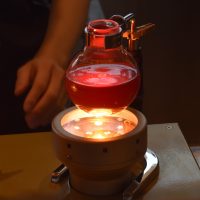 My first ever speciality coffee experience in Japan was at Maruyama Coffee in Nishi Azabu, conveniently located across the road from my hotel. Ever since then, I’ve had a soft spot for Maruyama Coffee, a high-end chain which has its origins in Nagano Prefecture. It was therefore fitting that when my friend and local guide, Christopher, took me on a coffee tour of Nagano, our first stop was Maruyama Coffee, which has a lovely coffee shop in the Midori shopping mall at Nagano Station. I also made a point of calling in on my return to Nagano on this trip.
My first ever speciality coffee experience in Japan was at Maruyama Coffee in Nishi Azabu, conveniently located across the road from my hotel. Ever since then, I’ve had a soft spot for Maruyama Coffee, a high-end chain which has its origins in Nagano Prefecture. It was therefore fitting that when my friend and local guide, Christopher, took me on a coffee tour of Nagano, our first stop was Maruyama Coffee, which has a lovely coffee shop in the Midori shopping mall at Nagano Station. I also made a point of calling in on my return to Nagano on this trip.
Maruyama is a blend of traditional Japanese hospitality (table service, attentive staff, baskets to put your things in so that they don’t have to rest on the floor) and speciality coffee. In the former aspect, it’s very unlike western coffee shops; in its latter aspect, third-wave aficionados will instantly feel at home. As an added bonus, the Nagano Station location specialises in syphon coffee, which is prepared on the counter-top for all to see. Other than that, you get the usual Maruyama offering, with a bewildering choice of origins and blends through cafetiere and espresso, plus a small food menu.
Continue reading...Kanazawa
This was my first visit to Kanazawa on the northern coast of Honshu, Japan’s main island. I struck lucky with my hotel, which overlooked Kanazawa Castle and was within walking distance of several excellent coffee shops.
Blue Monday
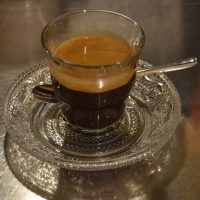 I was in luck during my time in Kanazawa, where I stayed for three days, part of the week I spent travelling around Japan at the end of August this year. I’d gone on the recommendation of my friend Christopher, but this was more with a view to being a tourist. The fact that I found so much great coffee, most of it within a few minutes of my hotel, was a bonus.
I was in luck during my time in Kanazawa, where I stayed for three days, part of the week I spent travelling around Japan at the end of August this year. I’d gone on the recommendation of my friend Christopher, but this was more with a view to being a tourist. The fact that I found so much great coffee, most of it within a few minutes of my hotel, was a bonus.
Blue Monday was the exception, since it’s not near my hotel. Instead, it’s close to Kanazawa station, making it a perfect introduction to the city (and a good last call before catching your train). Located in the Porte basement shopping complex under the Hotel Nikko, it offers espresso-based drinks, using a bespoke house-blend, plus herbal tea, hot dogs, toast, soft-serve ice cream and mini-doughnuts. If you want to stay, there’s no seating, but there are proper cups.
Continue reading...Curio Espresso and Vintage Design
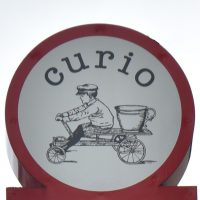 I did really well when I visited Kanazawa as part of the first of this year’s two Japanese trips. I’d chosen my hotel largely for its proximity to the castle (which I could see from my window), little realising that it was surrounded by a clutch of excellent coffee shops, one of which, Curio Espresso and Vintage Design, was visible from the other side of the hotel.
I did really well when I visited Kanazawa as part of the first of this year’s two Japanese trips. I’d chosen my hotel largely for its proximity to the castle (which I could see from my window), little realising that it was surrounded by a clutch of excellent coffee shops, one of which, Curio Espresso and Vintage Design, was visible from the other side of the hotel.
I was originally put on to Curio by Happy Cow, a site for finding vegetarian and vegan restaurants, which resulted in my heading to Curio for breakfast on my second day in Kanazawa. I then discovered that it had excellent coffee, serving an espresso-based menu using a bespoke house-blend from Kanazawa roaster Hiroyuki Arinobu of Ally Caffe. There’s also beer and wine for those so inclined.
Run by married couple Sol (Seattle) and Yuko (Kanazawa), Curio Espresso and Vintage Design is a friendly, welcoming place, beloved by locals and visitors alike. The food and coffee have a definite Seattle influence, while the vintage design part of the name (along with the “Curio” of the title) come from the décor, full of vintage items originally bought by Sol and Yuko to furnish their home!
Continue reading...Higashide Coffee
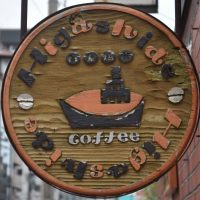 This time last week I was in Kanazawa on the north coast of Honshu, part of my short trip around Japan’s main island, where I unexpectedly found some excellent coffee. I say unexpectedly, since I wasn’t really looking, but I really struck it lucky with my hotel, with great coffee shops of varying styles and character all within a few minutes’ walk.
This time last week I was in Kanazawa on the north coast of Honshu, part of my short trip around Japan’s main island, where I unexpectedly found some excellent coffee. I say unexpectedly, since I wasn’t really looking, but I really struck it lucky with my hotel, with great coffee shops of varying styles and character all within a few minutes’ walk.
Higashide Coffee is a coffee shop/roastery in the mould of a traditional Japanese kissaten, such as Café de L’Ambre or Chatei Hatou, although the layout reminded me of a traditional American diner (Charlie’s Sandwich Shoppe, for example). All the coffee’s roasted on-site using what looks to me, at least, to be a very old Fuji Royal roaster, which sits in the window. In a move that I’ve not seen before, all the green beans are hand sorted before roasting, which is an impressive level of dedication!
There are around 20 origins to choose from, with roasts ranging from fairly light to very dark. They’re all available as pour-over, made to order behind the counter, while there’s also a limited espresso menu, plus a small selection of cakes. Be warned though, Higashide allows customers to smoke and, like many Japanese coffee shops, it’s cash only.
Continue reading...Kanazawaya Coffee Shop Head Office
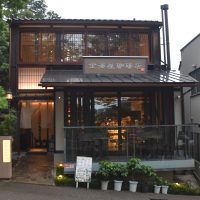 Last summer I spent a few days in Kanazawa in Ishikawa on Japan’s northern coast, where I found a small, thriving speciality coffee scene, not least the excellent Kanazawaya Coffee Shop Head Office. Both a coffee shop and roastery, it's just outside the northern entrance to Kanazawa Castle, making it the ideal spot for a pre- or post-sightseeing coffee.
Last summer I spent a few days in Kanazawa in Ishikawa on Japan’s northern coast, where I found a small, thriving speciality coffee scene, not least the excellent Kanazawaya Coffee Shop Head Office. Both a coffee shop and roastery, it's just outside the northern entrance to Kanazawa Castle, making it the ideal spot for a pre- or post-sightseeing coffee.
It's part of the Caravanserai Coffeeshop, which has been going since 1980 in the nearby Omicho market, with Kanazawaya Coffee Shop Head Office opening in 2011. As well as being a lovely coffee shop, spread over two floors with a small outside terrace and traditional Japanese sitting area, it’s also a roastery, with a 6 kg Giesen tucked in downstairs beside the counter.
In keeping with many Japanese coffee shops, full table service is offered, with a range of coffee on offer, backed up by a selection of cakes and snacks. As well as a concise espresso-based menu with the house-blend, there are five blends available on pour-over as well as five single-origins, with roast profiles ranging from light to dark. All the beans are available to buy in retail bags, along with a range of cups, coffee kit and hand-carved spoons.
Continue reading...Kyoto
This was my second time in Kyoto, having first visited in 2017. This was a relatively short stay, just two nights, but I managed to pack lots in, including some excellent coffee shops!
% Arabica, Arashiyama
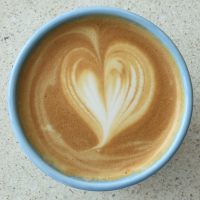 % Arabica is an international coffee shop/roaster chain which, like Omotesando Koffee, has its origins in Japan. In the case of % Arabica, it started in Kyoto, rather than Omotesandō, before spreading around the world, although so far I’ve only visited its locations in Kyoto and Shanghai. Today’s Coffee Spot, in Arashiyama, on Kyoto’s northwestern edge, has a stunning location on the edge of the Katsura River as it gushes out from a narrow valley through the mountains.
% Arabica is an international coffee shop/roaster chain which, like Omotesando Koffee, has its origins in Japan. In the case of % Arabica, it started in Kyoto, rather than Omotesandō, before spreading around the world, although so far I’ve only visited its locations in Kyoto and Shanghai. Today’s Coffee Spot, in Arashiyama, on Kyoto’s northwestern edge, has a stunning location on the edge of the Katsura River as it gushes out from a narrow valley through the mountains.
It’s an amazing location, both in which to enjoy your coffee and for the baristas, who share the spectacular views with their customers. It is, however, a tiny spot, little more than a counter in a single room, with limited seating, most of which is outside. There’s the usual concise espresso menu, with the option of the house-blend or a single-origin, an Ethiopian Yirgacheffee Adado, but the usual filter options are missing.
Continue reading...Bread, Espresso & Arashiyama Garden
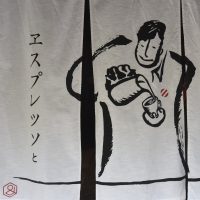 I first discovered Bread, Espresso & when I visited in its original Omotesandō location. Conveniently located a short walk from my hotel in Tokyo, it became a regular weekend brunch spot on that and subsequent visits. While I knew there multiple locations in Tokyo and, increasingly, around the country, I was unaware that Bread, Espresso & had opened in Kyoto, until I was alerted by the lovely baristas at % Arabica in Arashiyama. It was timely advice, since I was looking for breakfast (% Arabica only serves coffee) and Bread, Espresso & was a mere five-minute walk away!
I first discovered Bread, Espresso & when I visited in its original Omotesandō location. Conveniently located a short walk from my hotel in Tokyo, it became a regular weekend brunch spot on that and subsequent visits. While I knew there multiple locations in Tokyo and, increasingly, around the country, I was unaware that Bread, Espresso & had opened in Kyoto, until I was alerted by the lovely baristas at % Arabica in Arashiyama. It was timely advice, since I was looking for breakfast (% Arabica only serves coffee) and Bread, Espresso & was a mere five-minute walk away!
Kyoto has some amazing coffee shops in outstanding locations and Bread, Espresso & can be added to the list. It occupies a restored 200-year-old traditional Japanese farmhouse and associated buildings, set in a small compound. There’s a café in the farmhouse, the majority of the seating at traditional, low tables, while a separate takeaway bakery occupies another building.
Bread, Espresso & very much does what the name suggests. There are excellent (bread-based) breakfast and lunch menus, along with a selection of cakes, all baked on the premises, plus a concise, espresso-based coffee offering, all coupled with the usual high standard Japanese service.
Continue reading...Kurasu
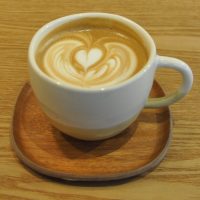 A relative newcomer to Kyoto’s speciality coffee scene, Kurasu only opened in 2016. It seems a tad harsh to call it a chain, but shortly after my visit, in 2017, a second branch of Kurasu opened. In Singapore. While an excellent coffee shop in its own right, Kurasu also champions Japanese coffee products, such as pour-over filters, kettles and crockery, operating a worldwide mail order business, which is where Kurasu had its roots, starting in Australia in 2013, before the owner returned to his home town in 2016.
A relative newcomer to Kyoto’s speciality coffee scene, Kurasu only opened in 2016. It seems a tad harsh to call it a chain, but shortly after my visit, in 2017, a second branch of Kurasu opened. In Singapore. While an excellent coffee shop in its own right, Kurasu also champions Japanese coffee products, such as pour-over filters, kettles and crockery, operating a worldwide mail order business, which is where Kurasu had its roots, starting in Australia in 2013, before the owner returned to his home town in 2016.
A five-minute walk from Kyoto’s main station, the coffee shop is a modest affair, long, and thin, with the counter on one side and minimal seating at the back. There’s a house blend from Single O, an Australian-based roaster with an outpost in Tokyo, while the pour-over and batch-brew feature single-origins from roasters around Japan, who change every month. There’s also a small selection of cake.
Continue reading...Ogawa Coffee, Kyoto Station
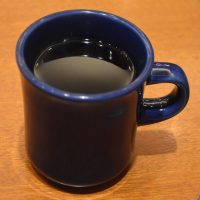 Yesterday I took the Shinkansen from Kyoto Station, on my way towards Tokyo, stopping en-route in Hamaya to visit Dark Arts and in Zushi (Breather Coffee). It therefore seems fitting that today’s Coffee Spot is the Kyoto Station branch of Ogawa Coffee. I had my first-ever Kyoto speciality coffee there on arriving from Tokyo in April 2017, and on my return, I had my final coffee (along with my breakfast) before leaving Kyoto yesterday morning. Not that 2017 was my first experience of Ogawa Coffee. Rather that came a year earlier in 2016, at Ogawa Coffee in Boston. Naturally, when visiting Kyoto, the home of Ogawa, I had to try at least one branch of Ogawa, and where better to start (and end), than at the station?
Yesterday I took the Shinkansen from Kyoto Station, on my way towards Tokyo, stopping en-route in Hamaya to visit Dark Arts and in Zushi (Breather Coffee). It therefore seems fitting that today’s Coffee Spot is the Kyoto Station branch of Ogawa Coffee. I had my first-ever Kyoto speciality coffee there on arriving from Tokyo in April 2017, and on my return, I had my final coffee (along with my breakfast) before leaving Kyoto yesterday morning. Not that 2017 was my first experience of Ogawa Coffee. Rather that came a year earlier in 2016, at Ogawa Coffee in Boston. Naturally, when visiting Kyoto, the home of Ogawa, I had to try at least one branch of Ogawa, and where better to start (and end), than at the station?
Despite being what could be described as a station takeaway café, Ogawa doesn’t compromise when it comes to coffee. There’s a concise espresso menu, offering espresso, cappuccino or latte, the latter being available hot or iced. There’s also filter, with a choice of the house-blend on batch-brew, and two single-origins as pour-over or Aeropress. You can either sit-in or have your coffee to go, which you can order from the separate retail counter.
Continue reading...Sentido Speciality Coffee
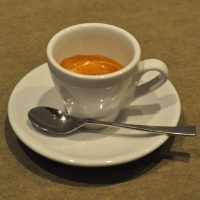 Sentido Speciality Coffee is in the heart of Kyoto, south of the Imperial Palace and east of Nijō Castle. It’s also a few blocks from Weekenders Coffee, so it’s in pretty good company! I visited in 2017, during my first trip to Japan, tipped off by both Commodities Connoisseur and Double Skinny Macchiato. However, I didn’t have time to properly write it up, so a return visit was top of my list when I got back to Kyoto last weekend.
Sentido Speciality Coffee is in the heart of Kyoto, south of the Imperial Palace and east of Nijō Castle. It’s also a few blocks from Weekenders Coffee, so it’s in pretty good company! I visited in 2017, during my first trip to Japan, tipped off by both Commodities Connoisseur and Double Skinny Macchiato. However, I didn’t have time to properly write it up, so a return visit was top of my list when I got back to Kyoto last weekend.
Down a side street off Takamiyacho, the main east-west artery, you’re unlikely to randomly wander by and, even if you do, you might well miss it, given its relatively small façade, set back slightly from the street. Inside it’s slightly larger than it seems, going back a long way, but it’s not what I’d describe as large.
The coffee, roasted by Cafetime Kyoto, is packaged/sold under the Sentido label, with all the beans available to buy in retail bags. There’s a blend and single-origin on espresso, while all the coffees, including the blend, are available through the cafetiere, with samples to try on the counter-top. If you’re hungry, there’s a range of sandwiches and cake, with plenty of vegetarian options.
Continue reading...Vermillion Café
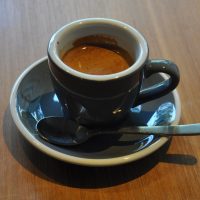 Vermillion is a chain of precisely two in Kyoto, with an espresso bar next to the Inari train station and, five minutes’ walk away, by a large pond at the foot of Mount Inariyama, is the Vermillion Café, subject of today’s Coffee Spot. I didn’t spend long enough in Kyoto, Japan’s old Imperial capital, nor did I get to many coffee shops, but with my visit to Vermillion, I definitely saved the best until last!
Vermillion is a chain of precisely two in Kyoto, with an espresso bar next to the Inari train station and, five minutes’ walk away, by a large pond at the foot of Mount Inariyama, is the Vermillion Café, subject of today’s Coffee Spot. I didn’t spend long enough in Kyoto, Japan’s old Imperial capital, nor did I get to many coffee shops, but with my visit to Vermillion, I definitely saved the best until last!
Vermillion Café has a small outside seating area at the front (northern) end, which catches the evening sun, while inside, it’s long and relatively wide, with a couple of large tables. However, the best part is at the back, where the south-facing wooden terrace overlooks the pond. Here you’ll find the best views and perhaps my favourite spot for coffee in the whole of Japan.
Vermillion serves coffee roasted by the local Weekenders Coffee, with a bespoke house-blend on espresso and a choice of a blend or single-origin on pour-over through the V60, all of which can be had hot or over ice. There’s also a limited range of tea, beer and soft drinks, plus, if you’re hungry, a small selection of sandwiches and cake.
Continue reading...Tokyo
Although I spent two weeks Tokyo, I was working for most it. I did have two weekends to explore, however, and got to know the coffee shops of Aoyama, between my hotel and the office, extremely well!
Blue Bottle Coffee, Aoyama
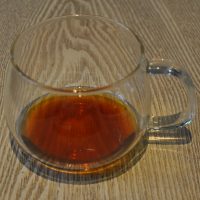 Blue Bottle Coffee is something of an institution in California, with numerous outlets in Los Angeles and the Bay Area. From its base, Blue Bottle has spread both east, with branches on the east coast, ranging from Miami to Boston, and west, where it’s crossed the Pacific Ocean to Japan, with branches in Kobo, Kyoto and as of 2019, fourteen in Tokyo.
Blue Bottle Coffee is something of an institution in California, with numerous outlets in Los Angeles and the Bay Area. From its base, Blue Bottle has spread both east, with branches on the east coast, ranging from Miami to Boston, and west, where it’s crossed the Pacific Ocean to Japan, with branches in Kobo, Kyoto and as of 2019, fourteen in Tokyo.
My relationship with Blue Bottle in the US has been a bit hit and miss, liking some places, but not others. However, based on my limited experience in Tokyo, I’m smitten by Blue Bottle in Japan. The branch in Aoyama was around the corner from my office when I visited in April last year, one of a cluster of excellent coffee shops, all within easy walking distance of the office, that include Japanese café/roaster Sarutahiko Coffee and two further foreign-influenced coffee shops, Coutume and Café Kitsuné, both of whom have their roots in Paris.
Blue Bottle serves a single-origin and blend on espresso, with another single-origin and blend on pour-over, plus two more single-origins on syphon. There’s also a concise breakfast/lunch menu and a selection of cakes. Of all the places I visited in Japan, it is the most American in terms of service and style.
Continue reading...Blue Bottle Coffee, Nakameguro
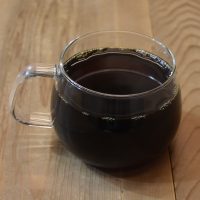 It’s weird, given how few of Blue Bottle’s US outlets meet my “places where I like to have coffee” criteria, that I’ve adored all three Blue Bottle locations that I’ve visited in Tokyo. Today is the turn of Blue Bottle’s Nakameguro coffee shop, which I first visited during last summer’s trip. It occupies a tall, narrow building, all concrete and glass, that was purpose-built as a factory. The coffee shop is at the front on the ground floor, with additional seating in a basement-like space to the rear, above which is a training area/lab. The top two floors, meanwhile, are Blue Bottle’s offices.
It’s weird, given how few of Blue Bottle’s US outlets meet my “places where I like to have coffee” criteria, that I’ve adored all three Blue Bottle locations that I’ve visited in Tokyo. Today is the turn of Blue Bottle’s Nakameguro coffee shop, which I first visited during last summer’s trip. It occupies a tall, narrow building, all concrete and glass, that was purpose-built as a factory. The coffee shop is at the front on the ground floor, with additional seating in a basement-like space to the rear, above which is a training area/lab. The top two floors, meanwhile, are Blue Bottle’s offices.
The offering’s very similar to the other Tokyo Blue Bottles that I’ve visited, with reduced food options compared to the Aoyama coffee shop. The usual espresso-based menu has the current seasonal blend plus a single-origin, with options including macchiato, Gibraltar, cappuccino and latte, along with cold-brew and iced coffee. This is allied with a strong pour-over offering, with six Blue Bottle drippers lined up on the counter-front, each standing on in-built scales. There’s a choice of a dedicated pour-over blend, plus a daily single-origin (different from the espresso). If you’re hungry, there’s cake, waffles and a panini.
Continue reading...Blue Bottle Coffee, Shinagawa Station
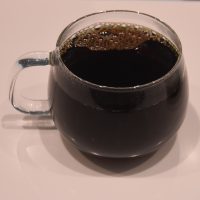 Blue Bottle Coffee at Shinagawa Station is its sixth (of currently 14) locations in Tokyo, opening at the end of 2016, just after the Nakameguro branch. I discovered it on my first visit to Japan in April 2017, when I based myself near the station, catching the bullet trains on a daily basis as I explored Japan. As a result, it became a regular calling point first thing in the morning, with a pre-departure cappuccino to go in my SoL Cup. Since then, I’ve made a point of popping by whenever I’m changing trains in the station (which, admittedly, hasn’t been very often).
Blue Bottle Coffee at Shinagawa Station is its sixth (of currently 14) locations in Tokyo, opening at the end of 2016, just after the Nakameguro branch. I discovered it on my first visit to Japan in April 2017, when I based myself near the station, catching the bullet trains on a daily basis as I explored Japan. As a result, it became a regular calling point first thing in the morning, with a pre-departure cappuccino to go in my SoL Cup. Since then, I’ve made a point of popping by whenever I’m changing trains in the station (which, admittedly, hasn’t been very often).
Despite being a station coffee shop, Blue Bottle, following the best traditions of Japanese station coffee shops such as Ogawa Coffee at Kyoto Station and Maruyama Coffee at Nagano Station, has a full offering in line with most other Blue Bottle locations in the city, although it lacks the extensive food offerings of the Aoyama coffee shop. The seasonal Hayes Valley blend is on espresso, along with a regularly-changing single-origin, while there’s a dedicated filter blend, different a single-origin and decaf on pour-over. There’s also a strong retail offering, plus a small range of cakes and snacks.
Continue reading...Bread, Espresso &
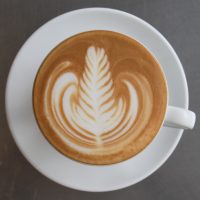 Bread, Espresso & pretty much does what the name says, serving bread-based dishes, espresso-based drinks and a few other things from its original store in Omotesandō, a bustling district that’s seen the birth of some of Tokyo’s best coffee. So successful has it been that there are now 16 branches dotted around Tokyo and beyond, including a pair of new locations in Kyoto (which opened in the summer of 2019).
Bread, Espresso & pretty much does what the name says, serving bread-based dishes, espresso-based drinks and a few other things from its original store in Omotesandō, a bustling district that’s seen the birth of some of Tokyo’s best coffee. So successful has it been that there are now 16 branches dotted around Tokyo and beyond, including a pair of new locations in Kyoto (which opened in the summer of 2019).
I’ll be honest: Omotesandō has many great coffee options and, as such, Bread, Espresso & is not somewhere I come for the coffee alone. That said, in a city where the non-speciality coffee can frequently be disappointing, Bread, Espresso &’s coffee has always been spot-on, plus it makes an excellent breakfast (until 10:00) and lunch spot, as well as a take-away bakery. There’s not a lot of seating, but for both my visits, table turn-over was high and the staff will always fit you in if possible.
Continue reading...Coffee Supreme, Tokyo
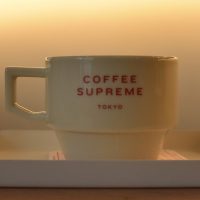 Tokyo has, I quickly discovered, a very international coffee scene, something it has in common with London, with brands from all around the world. This includes California in the USA (Verve, Blue Bottle), Europe (Fuglen, Stockholm Roast) and Australia (Single-O). New Zealand is represented by the likes of Allpress, and, since October 2017, Coffee Supreme, which opened in Shibuya, a couple of streets away from the original Fuglen.
Tokyo has, I quickly discovered, a very international coffee scene, something it has in common with London, with brands from all around the world. This includes California in the USA (Verve, Blue Bottle), Europe (Fuglen, Stockholm Roast) and Australia (Single-O). New Zealand is represented by the likes of Allpress, and, since October 2017, Coffee Supreme, which opened in Shibuya, a couple of streets away from the original Fuglen.
I first visited in July 2018, tipped off by Little Nap Coffee Stand, calling back a year later during my visit in September this year. Located in the tangle of streets north of Shibuya station, Coffee Supreme is at the southwestern edge of Yoyogi Park, occupying the ground floor of a long, extremely thin building that’s also home to a pair of Kiwi restaurants.
The coffee is from Coffee Supreme’s Melbourne roastery, with house-blend, guest and decaf on espresso, the menu including Kiwi staples such as flat white and long black. There are three monthly single-origins, one of which is on batch brew, the option changing daily, with all the beans (blends and single-origins) available in retail bags. There’s also craft beer, and, if you’re hungry, a small range of cakes, toast and pies.
Continue reading...Glitch Coffee Brewed @ 9h
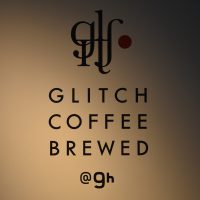 I first came across Tokyo’s Glitch Coffee & Roasters on my around the world trip in 2018. Then, I knew it as a small coffee shop/roaster, with a passion for light roasts and filter coffee. When I returned to Tokyo in September this year, I learnt that there was a second branch of Glitch, in Asakaka, closer to my hotel, so on my final day in Tokyo, I set out to explore.
I first came across Tokyo’s Glitch Coffee & Roasters on my around the world trip in 2018. Then, I knew it as a small coffee shop/roaster, with a passion for light roasts and filter coffee. When I returned to Tokyo in September this year, I learnt that there was a second branch of Glitch, in Asakaka, closer to my hotel, so on my final day in Tokyo, I set out to explore.
Glitch Coffee Brewed is in the basement lobby of Nine Hours, a newly-opened capsule hotel, both hotel and coffee shop having opened in May this year. There’s not much seating, just nine stools at a U-shaped counter, with a bench inside and another outside. It doubles down on Glitch Coffee & Roasters’ filter obsession, only offering pour-over (via the V60), with a similar range of beans and tasting flights. If you can’t wait, there’s also batch-brew during the week.
Continue reading...Glitch Coffee & Roasters
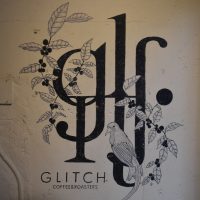 If you take a look at my coffee map of Tokyo, you’ll see that it’s strongly focused on Shibuya, Omotesandō and Aoyama, where I’ve spent most of my time, usually for work. Today’s Coffee Spot, Glitch Coffee & Roasters, is, in that sense, unusual. A well-established roastery/coffee shop, it’s located in Jimbōchō, just to the north of the Imperial Palace gardens, with a recently-opened second location, Glitch Coffee Brewed, in the Nine Hours capsule hotel in Akasaka.
If you take a look at my coffee map of Tokyo, you’ll see that it’s strongly focused on Shibuya, Omotesandō and Aoyama, where I’ve spent most of my time, usually for work. Today’s Coffee Spot, Glitch Coffee & Roasters, is, in that sense, unusual. A well-established roastery/coffee shop, it’s located in Jimbōchō, just to the north of the Imperial Palace gardens, with a recently-opened second location, Glitch Coffee Brewed, in the Nine Hours capsule hotel in Akasaka.
Like many of Tokyo’s speciality coffee shop/roasters, Glitch Coffee & Roasters is a pretty small affair, with the roaster, a 5kg Probat, in the actual coffee shop on the right-hand side, in full view of the customers. Although a pair of single-origins are available on espresso, the focus is firmly on pour-over, where a further selection of single-origins (typically five or six) are available through the V60. All the beans are, naturally, available in retail bags, with Glitch specialising in light roasts.
Of particular interest to me were the tasting flights, where you can try two or three of the single-origin pour-overs (chosen by Glitch) side-by-side. A recent addition is the Geisha tasting flight, where you can compare two Geishas, again as pour-overs.
Continue reading...Lattest
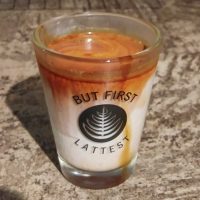 Lattest, the self-style Omotesando Espresso Bar, is in good company, Omotesando being the home of several excellent coffee shops, including Sarutahiko Coffee, Ratio &C and, of course, Koffee Mameya. It’s also across the street from Bread, Espresso &, where I had started my current Tokyo coffee adventures the day before. It also helps that Lattest is a few minutes’ walk from both my hotel and my office for this trip.
Lattest, the self-style Omotesando Espresso Bar, is in good company, Omotesando being the home of several excellent coffee shops, including Sarutahiko Coffee, Ratio &C and, of course, Koffee Mameya. It’s also across the street from Bread, Espresso &, where I had started my current Tokyo coffee adventures the day before. It also helps that Lattest is a few minutes’ walk from both my hotel and my office for this trip.
Lattest began in 2012 and now boasts six branches, this being the original. There’s an evening espresso/alcohol bar in Azabujuban, a bag/shoe shop across the road (but not coffee) and three coffee/bike shops, continuing the long association between espresso and cycling. Two are in Tokyo, with the third in Kyoto.
Lattest does pretty much what the name says, serving a range of espresso-based drinks, including the synonymous “lattest”, an espresso shot over cold milk. All the coffee is roasted in-house, originally on the roaster in Glitch Coffee, but now at its own dedicated roastery. There are two single-origins on espresso, plus three others roasted for filter and available to buy in retail bags. During the week, you can order pour-over, plus there’s a small selection of other drinks, a handful of cakes and a toasted sandwich option if you want something more savoury.
Continue reading...Little Nap Coffee Roasters
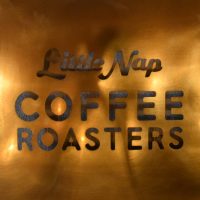 I discovered Little Nap, the Tokyo-based coffee shop/roaster chain (of precisely two locations) when I visited the original, Little Nap Coffee Stand, in the summer of 2018. During that trip I also popped over to the second location, Little Nap Coffee Roasters, a short, 10-minute walk to the southwest. However, for various reasons, I never managed to write it up, so last week, on my most recent trip, I returned to check that nothing had changed.
I discovered Little Nap, the Tokyo-based coffee shop/roaster chain (of precisely two locations) when I visited the original, Little Nap Coffee Stand, in the summer of 2018. During that trip I also popped over to the second location, Little Nap Coffee Roasters, a short, 10-minute walk to the southwest. However, for various reasons, I never managed to write it up, so last week, on my most recent trip, I returned to check that nothing had changed.
Little Nap occupies a narrow, three-storey, standalone building on the south side of the busy highway which runs through the southern end of Yoyogi Park to the east. Downstairs, at the front, is a compact coffee shop, while at the back is an equally compact roastery. The first floor is home to the Little Nap Record Shop and, during my visit in 2018, hosted a pop-up kitchen, while the top floor is a gallery with rotating displays.
Little Nap serves a house-blend from a concise, espresso-based menu, with four seasonal single-origins on pour-over (hot or cold), with all the coffee available to buy in retail bags. There’s also a small range of sandwiches and hot dogs, plus a selection of cakes if you’re hungry.
Continue reading...Maruyama Coffee Experiences
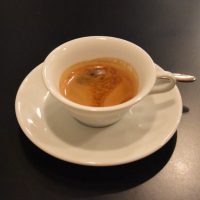 Earlier this week, I wrote about the Maruyama Single Origin store in Aoyama, one of my favourite after-work haunts when I’m working in Tokyo (although I since learnt that it has closed). It’s a lovely coffee shop in its own right, offering the sort of high-end service that I’ve come to expect from visits to other Maruyama locations, such as Nishi Azabu and Nagano Station. However, the single origin store goes one step further, with the focus even more firmly on the coffee.
Earlier this week, I wrote about the Maruyama Single Origin store in Aoyama, one of my favourite after-work haunts when I’m working in Tokyo (although I since learnt that it has closed). It’s a lovely coffee shop in its own right, offering the sort of high-end service that I’ve come to expect from visits to other Maruyama locations, such as Nishi Azabu and Nagano Station. However, the single origin store goes one step further, with the focus even more firmly on the coffee.
As well as only serving single-origins (a typical Maruyama will have seven different blends), there are delights such as an espresso and cappuccino set (effectively a split shot or one-and-one) and, a new one on me, the same espresso served in two different cups. About the only thing that Maruyama Single Origin doesn’t offer is a filter tasting flight, but since there are always four or five samples for you try on the downstairs counter, it’s almost the same thing.
Naturally, I had to indulge, and, over the span of several visits, I put these various coffee experiences through their paces. Rather than try to cram them all into my write-up of Maruyama Single Origin, I decided to dedicate this Saturday Supplement to my experiences.
Continue reading...Maruyama Coffee, Nishi Azabu
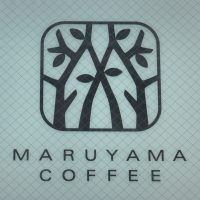 My first Tokyo coffee experience was down, in part, to the excellent Commodities Connoisseur and also to serendipity. Having done very little planning for this trip, I had picked my hotel for the first part of my stay almost at random. On arrival, I was delighted to discover that it was across the road from one of Commodities Connoisseur’s recommendations, Maruyama Coffee.
My first Tokyo coffee experience was down, in part, to the excellent Commodities Connoisseur and also to serendipity. Having done very little planning for this trip, I had picked my hotel for the first part of my stay almost at random. On arrival, I was delighted to discover that it was across the road from one of Commodities Connoisseur’s recommendations, Maruyama Coffee.
Maruyama Coffee is a roaster based in Karuizawa in the mountains northwest of Tokyo and founded in 1991 by Kentaro Maruyama. Nishi Azabu is the sixth store, one of three in Tokyo. It’s a lovely space, with plenty of seating and full table service. Although not a traditional Japanese coffeehouse (as I understand them to be), it was a very Japanese experience, far removed from the typical (western) third-wave café.
Perhaps the most surprising thing is the vast array of coffee on offer, which can be had principally through the humble cafetiere, although there are also options for Steampunk, Cores pour-over cones and espresso. If you are hungry, there is a small breakfast menu (08:00 – 10:00) and a decent selection of cake. There’s also a huge retail section, including beans, coffee-making equipment and a range of other products.
Continue reading...Maruyama Single Origin
 If you’ve been keeping up with my adventures in Japan over the last two years, you’ll know that Maruyama Coffee, the regional chain from Nagano prefecture, holds a special place in my heart. My first ever coffee in Japan was at Maruyama in Nishi Azabu, while more recently I’ve visited Maruyama in Nagano Station. Today’s Coffee Spot is Maruyama Single Origin, a relatively recent addition, which opened last year in Tokyo’s Aoyama neighbourhood.
If you’ve been keeping up with my adventures in Japan over the last two years, you’ll know that Maruyama Coffee, the regional chain from Nagano prefecture, holds a special place in my heart. My first ever coffee in Japan was at Maruyama in Nishi Azabu, while more recently I’ve visited Maruyama in Nagano Station. Today’s Coffee Spot is Maruyama Single Origin, a relatively recent addition, which opened last year in Tokyo’s Aoyama neighbourhood.
Maruyama Single Origin occupies a small, two-storey building, with downstairs serving retail/takeaway customers, while upstairs offers Maruyama’s traditional full table service. You get the usual Maruyama excellence, but with the twist that the store only serves single-origins, with a daily option on espresso and the full range (usually around 30 single-origins, from up to 10 different countries, including several exclusive to the store) available through syphon and cafetiere.
If anything, the focus is even more firmly on the coffee, with delights such as an espresso and cappuccino set and, a new one on me, the same espresso served in two different cups. Perhaps as compensation for this, there’s a reduced food offering compared to the other locations, with just a small selection of cakes, plus toast.
Continue reading...Nem Coffee & Espresso
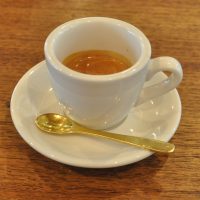 The delightful Nem Coffee & Espresso is definitely the hidden gem of Tokyo’s speciality coffee scene. Located south of the Arisugawa-no-miya Memorial Park, Nem is tucked away down a narrow, pedestrian alley, so much so that you think you’re walking into a residential neighbourhood to visit someone’s house, which is not as far from the truth as it seems. The coffee shop is on the ground floor of an old house, painstakingly renovated/converted by the owners, a married couple who live upstairs, Nem opening for business in May 2016. The result is a small, but delightful space, with windows front and back, with a very Japanese feel to the architecture, but a very western feel to the coffee shop itself.
The delightful Nem Coffee & Espresso is definitely the hidden gem of Tokyo’s speciality coffee scene. Located south of the Arisugawa-no-miya Memorial Park, Nem is tucked away down a narrow, pedestrian alley, so much so that you think you’re walking into a residential neighbourhood to visit someone’s house, which is not as far from the truth as it seems. The coffee shop is on the ground floor of an old house, painstakingly renovated/converted by the owners, a married couple who live upstairs, Nem opening for business in May 2016. The result is a small, but delightful space, with windows front and back, with a very Japanese feel to the architecture, but a very western feel to the coffee shop itself.
Talking of coffee, Nem has a concise menu, drinks split between “black” and “with milk”. There’s a house-blend on espresso (from Switch Coffee Roasters) and two single-origins plus a decaf (from Nozy Coffee) on filter through the cafetiere (hot) or Kalita Wave (cold). There’s also tea and hot chocolate, plus a small food menu, with a choice of two cakes. Small is definitely the name of the game at Nem, with all the food being cooked to order in a compact, open kitchen behind the counter.
Continue reading...Onibus Coffee, Nakameguro
 Onibus Coffee is a small chain of five coffee shops, including this, the roastery, in the residential district of Nakameguro in Tokyo. That said, it won’t be the roastery for much longer, since there are moves afoot to relocate the Diedrich roaster from the cramped space in the rear of the store to a dedicated site. Until then, enjoy the spectacle of seeing the roaster in action as you sip your coffee.
Onibus Coffee is a small chain of five coffee shops, including this, the roastery, in the residential district of Nakameguro in Tokyo. That said, it won’t be the roastery for much longer, since there are moves afoot to relocate the Diedrich roaster from the cramped space in the rear of the store to a dedicated site. Until then, enjoy the spectacle of seeing the roaster in action as you sip your coffee.
There’s outdoor seating along the side of the small, two-storey building, or you can sit upstairs, where, instead of the roaster, you can watch the trains rattling by, Onibus backing onto the elevated train tracks of the nearby station. You can’t quite touch the passing trains, but it’s close. It’s a busy line, so you’re never far from the clickety-clack of the next train (every minute or two). Personally, I enjoy the sound of the trains going by, but others might find it off-putting.
Onibus serves a simple espresso menu using one of its blends, while there’s a choice of several single-origins on pour-over through the V60. There’s also a small selection of cake, along with retail bags of the coffee and a small range of home coffee equipment.
Continue reading...Onibus Coffee, Yakumo
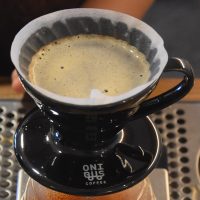 Onibus Coffee is a small coffee shop/roaster chain in Tokyo. Its Nakameguro location was one of my first stops when I came to Japan in 2017, my first time in the country. Back then, it also housed the roaster, a cosy arrangement given how small the place was. However, on my return to Tokyo in September this year, I discovered that the roaster was gone, relocated to a new coffee shop/roastery in Meguro, so I headed over there to check it out.
Onibus Coffee is a small coffee shop/roaster chain in Tokyo. Its Nakameguro location was one of my first stops when I came to Japan in 2017, my first time in the country. Back then, it also housed the roaster, a cosy arrangement given how small the place was. However, on my return to Tokyo in September this year, I discovered that the roaster was gone, relocated to a new coffee shop/roastery in Meguro, so I headed over there to check it out.
The new coffee shop/roastery is Onibus’ fifth location, joining About Life Coffee Brewers and Ratio &C, plus the original location in Okusawa, which, in true Coffee Spot fashion, I’ve yet to visit! The coffee shop is a similar size to the Nakameguro coffee shop, but the roastery, which has its own Meet the Roaster feature, is in a much bigger space to the left.
The coffee shop, the subject of today’s Coffee Spot, has the usual Onibus offering, with a several (five or six) single-origins available on both pour-over and espresso, where they are joined by the Step blend. If you’re hungry, there’s a small selection of cakes, all baked in-house.
Continue reading...Ratio &C
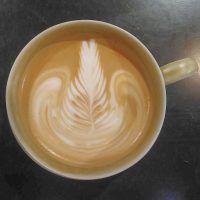 Ratio &C is part of Tokyo-based coffee shop/roaster chain, Onibus, which started in Okusawa, where it’s still going strong (and which, naturally, I’ve not yet visited). There are now five shops, including the original Nakameguro roastery/coffee shop, a new roastery/coffee shop in Yakumo, and Shibuya’s About Life Coffee Brewers. And, of course, today’s Coffee Spot, Ratio &C, a lovely coffee bar inside a cycle shop.
Ratio &C is part of Tokyo-based coffee shop/roaster chain, Onibus, which started in Okusawa, where it’s still going strong (and which, naturally, I’ve not yet visited). There are now five shops, including the original Nakameguro roastery/coffee shop, a new roastery/coffee shop in Yakumo, and Shibuya’s About Life Coffee Brewers. And, of course, today’s Coffee Spot, Ratio &C, a lovely coffee bar inside a cycle shop.
Ratio &C is a few minutes’ walk from my hotel, which is how I came to visit it when in Tokyo last October as part of my around the world trip. Back then, I’d have described Ratio &C as a classic coffee bar in cycle shop, but on my return last week, I found that the coffee shop had expanded a little, with more seating and less emphasis on the cycling. It’s a very peaceful environment, the ideal post-work spot where I could catch up with things before retiring to my hotel for the evening.
There’s the standard Onibus offering, with the Step blend on espresso for milk-based drinks. It’s also available on pour-over, along with another blend and a seasonal selection of single-origins, one of which is available on espresso each day.
Continue reading...Sarutahiko Coffee Omotesandō
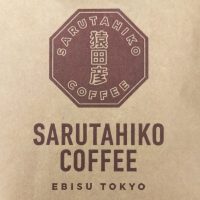 Sarutahiko Coffee is a small, but growing, coffee shop/roaster chain in Tokyo. This branch shares space with a bookshop and travel agent in HIS, a multi-level shop on a quiet street near my office, one of several excellent coffee options within a five minutes’ walk. It’s also another recommendation from the Commodities Connoisseur (although he visited the flagship Ebisu branch).
Sarutahiko Coffee is a small, but growing, coffee shop/roaster chain in Tokyo. This branch shares space with a bookshop and travel agent in HIS, a multi-level shop on a quiet street near my office, one of several excellent coffee options within a five minutes’ walk. It’s also another recommendation from the Commodities Connoisseur (although he visited the flagship Ebisu branch).
Sarutahiko roasts all its own coffee, a considerable selection of which is on sale at the Omotesandō branch. There is a variety of espresso-based drinks, either hot or over ice, while there’s a large range of single-origins (six) and blends (five) available as pour-over using the V60. Although there’s plenty of seating, the Omotesandō branch is rather unusual in that it only serves coffee in takeaway cups, so be sure to bring your own.
Sarutahiko has several neat features. For example, although it’s counter service, you are given a playing card when you order, with an identical playing card being put down on the counter with your coffee, so you know which one is yours. On the retail side, each coffee has a card with tasting and origin notes, with the card’s colour indicating the darkness of the roast. Genius!
Continue reading...Stockholm Roast, Tokyo
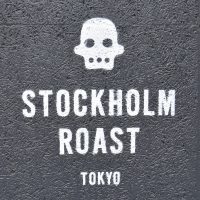 Stockholm Roast was a chance discovery on my way to the office during the second of my two trips to Tokyo in 2018. At the time, it was inside the Tobacco Stand, an old-fashioned smoke shack, for want of a better word, but this closed in September 2019, with Stockholm Roast taking over as a standalone operation.
Stockholm Roast was a chance discovery on my way to the office during the second of my two trips to Tokyo in 2018. At the time, it was inside the Tobacco Stand, an old-fashioned smoke shack, for want of a better word, but this closed in September 2019, with Stockholm Roast taking over as a standalone operation.
There’s not much to Stockholm Roast, just a small, square kiosk with a couple of stools inside at the counter, plus two tables, a wooden sofa and an armchair outside in a sheltered seating area. There are a pair of takeaway windows, one here, the other on the street, with a handful of stools, but otherwise that’s it.
Stockholm Roast gets its coffee from the roaster of the same name in Sweden, with the Transatlantic Blend on espresso, all the shots pulled on a La Marzocco Linea Mini espresso machine. This is joined by another blend (Tokyo) and two or three single-origins on pour-over, while if you're hungry, there's a daily selection of fresh cakes and pastries.
Continue reading...Tasting Flights at Glitch Coffee
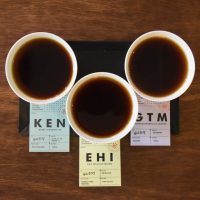 Tokyo’s speciality coffee scene is incredibly varied, ranging from international brands and traditional kissaten to small, home-grown coffee shop/roasters, absorbing global influences to forge their own identities. Yesterday’s Coffee Spot, Glitch Coffee & Roasters, definitely falls into the latter category and is one of the most innovative coffee shops that I’ve visited in Tokyo. Best of all, it’s served me some truly outstanding coffee, the subject of today’s Saturday Supplement.
Tokyo’s speciality coffee scene is incredibly varied, ranging from international brands and traditional kissaten to small, home-grown coffee shop/roasters, absorbing global influences to forge their own identities. Yesterday’s Coffee Spot, Glitch Coffee & Roasters, definitely falls into the latter category and is one of the most innovative coffee shops that I’ve visited in Tokyo. Best of all, it’s served me some truly outstanding coffee, the subject of today’s Saturday Supplement.
Glitch roasts on a 5kg Probat, tucked away on the right-hand side of the coffee shop in full view of the customers. Concentrating on lightly-roasted single-origins, two of which are on espresso, the real star is the pour-over. There’s a row V60s along the front of the counter, each with a glass jar of beans and a card giving tasting notes and details of the origin.
While you can order by the cup, I was drawn to the tasting flights, which allow you to try two or three of the single-origin pour-overs (chosen by Glitch) side-by-side. So drawn, in fact, that today’s post is all about the two tasting flights I’ve had, the first in 2018 and the other last weekend at the end of my most recent trip.
Continue reading...Verve Coffee Roasters, Omotesando
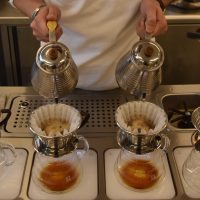 Verve Coffee Roasters started life in Santa Cruz, California, before spreading north to San Francisco, south to Los Angeles and then across the Pacific to Japan, with two branches in Tokyo and another in Kamakura. I first came across Verve as a roaster in Café Plume (now Paquebot Mont-Royal) in Montréal, before visiting Verve’s flagship branch on Pacific Avenue in Santa Cruz. The original Tokyo branch is in Shinjuku, a loud, busy place which I briefly visited in July. The second branch, subject of today’s Coffee Spot, opened in April this year. A much more relaxed basement affair under the Rag & Bone Store in Omotesando, I visited twice, first in July, and again on my return in October.
Verve Coffee Roasters started life in Santa Cruz, California, before spreading north to San Francisco, south to Los Angeles and then across the Pacific to Japan, with two branches in Tokyo and another in Kamakura. I first came across Verve as a roaster in Café Plume (now Paquebot Mont-Royal) in Montréal, before visiting Verve’s flagship branch on Pacific Avenue in Santa Cruz. The original Tokyo branch is in Shinjuku, a loud, busy place which I briefly visited in July. The second branch, subject of today’s Coffee Spot, opened in April this year. A much more relaxed basement affair under the Rag & Bone Store in Omotesando, I visited twice, first in July, and again on my return in October.
Although a basement, it’s a fairly bright spot. There’s space for a counter down one side, with seating opposite, plus a small seating area at the back. There’s the usual Verve offering, with a blend and daily single-origin on espresso, plus multiple single-origins on pour-over through the Kalita Wave. All the coffee, which is roasted in Santa Cruz and air-freighted over, is available to buy in retail bags. Meanwhile, if you’re hungry, there’s a selection of waffles, all made to order.
Continue reading...Hayama, Zushi & Kamakura
As well as exploring Tokyo, I called in on Hayama & Zushi on my way from Kyoto to Tokyo and took a day trip to the seaside town of Kamakura, all in Kanagawa prefecture. Naturally there was coffee involved on both occasions!
Breather Coffee
 Breather Coffee, in Zushi in Kanagawa prefecture, was a recommendation from Dark Arts Coffee in nearby Hayama, who I visited while on my way to Tokyo during my recent trip to Japan in August/September this year. Occupying a small spot right in the centre of town, Breather Coffee is a five-minute walk from the station, making it an easy option if you’re reliant on public transport.
Breather Coffee, in Zushi in Kanagawa prefecture, was a recommendation from Dark Arts Coffee in nearby Hayama, who I visited while on my way to Tokyo during my recent trip to Japan in August/September this year. Occupying a small spot right in the centre of town, Breather Coffee is a five-minute walk from the station, making it an easy option if you’re reliant on public transport.
Run by a lovely, friendly Japanese couple, Kohei and Mizuho, Breather Coffee uses Melbourne roasters, Maker Coffee, a legacy of the five years that Kohei and Mizuho spent in Melbourne (which also accounts for their excellent English). You’ll find the Smith Blend on espresso, where it’s joined by a single-origin option, plus another on pour-over through the V60. The single-origins change on a weekly basis and are also available in retail bags. If you’re hungry, there are western-style cakes and a couple of toasties.
Continue reading...Dark Arts Coffee Japan
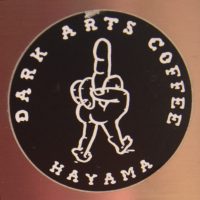 I first discovered Dark Arts as a roaster, enjoying its coffee at various places, including London’s The Black Chapel, Chester’s Little Yellow Pig and Manchester’s Idle Hands and Siop Shop. This summer, after much patient encouragement on twitter from Mike Stanbridge, I finally visited I Will Kill Again, Dark Arts’ coffee shop/roastery in Homerton in East London. That safely out of the way, I thought I’d collect the full set, using trip to Japan in August/September this year to visit Dark Arts’ Japanese outpost in Hayama, a small town in the Kanagawa prefecture, southwest of Tokyo.
I first discovered Dark Arts as a roaster, enjoying its coffee at various places, including London’s The Black Chapel, Chester’s Little Yellow Pig and Manchester’s Idle Hands and Siop Shop. This summer, after much patient encouragement on twitter from Mike Stanbridge, I finally visited I Will Kill Again, Dark Arts’ coffee shop/roastery in Homerton in East London. That safely out of the way, I thought I’d collect the full set, using trip to Japan in August/September this year to visit Dark Arts’ Japanese outpost in Hayama, a small town in the Kanagawa prefecture, southwest of Tokyo.
Like I Will Kill Again, this is a coffee shop/roastery which opened in July 2018, although the Probat roaster was only installed in April this year. Prior to that, the coffee was imported from the UK roastery. The offering will be very familiar to anyone used to Dark Arts Coffee, with the likes of Lost Highway on espresso. This, like its UK counterpart, is a single-origin Nicaraguan, and while it has a similar taste profile, it’s a different bean. The coffee menu, meanwhile, is more typically Japanese, with plenty of iced options and various coffee cocktails. There’s also an all-day, western brunch menu, complete with specials.
Continue reading...Verve Coffee Roasters, Kamakura
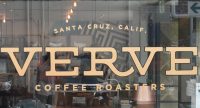 I spent last week in the Bay Area, not far from Santa Cruz, home of Verve Coffee Roasters, which I visited almost exactly three years ago, in 2017. The following year it was the turn of Verve in Omotesando, Tokyo and then, last year, I managed to visit Verve in both Los Angeles (Spring Street) and San Francisco (Market Street). I was happily congratulating myself on having visited Verve in every city where it has a presence when I realised that one of its Japanese coffee shops was in Kamakura rather than Tokyo. Damn! So, when I headed back to Japan in September that year, I took a day trip to Kamakura. Naturally, I popped into Verve for coffee.
I spent last week in the Bay Area, not far from Santa Cruz, home of Verve Coffee Roasters, which I visited almost exactly three years ago, in 2017. The following year it was the turn of Verve in Omotesando, Tokyo and then, last year, I managed to visit Verve in both Los Angeles (Spring Street) and San Francisco (Market Street). I was happily congratulating myself on having visited Verve in every city where it has a presence when I realised that one of its Japanese coffee shops was in Kamakura rather than Tokyo. Damn! So, when I headed back to Japan in September that year, I took a day trip to Kamakura. Naturally, I popped into Verve for coffee.
If you’re familiar with Verve, then the coffee offering will come as no surprise. There’s the Streetlevel seasonal blend on espresso, joined by a single-origin and decaf, while on filter, Verve has a blend on batch brew and five single-origins, plus decaf on pour-over. There’s also my favourite, the one-and-one, plus a coffee flight, where you can compare three of the pour-over options side-by-side. Meanwhile, if you’re hungry, you can choose from three savoury waffles, three sweet waffles and three toast-based dishes.
Continue reading...